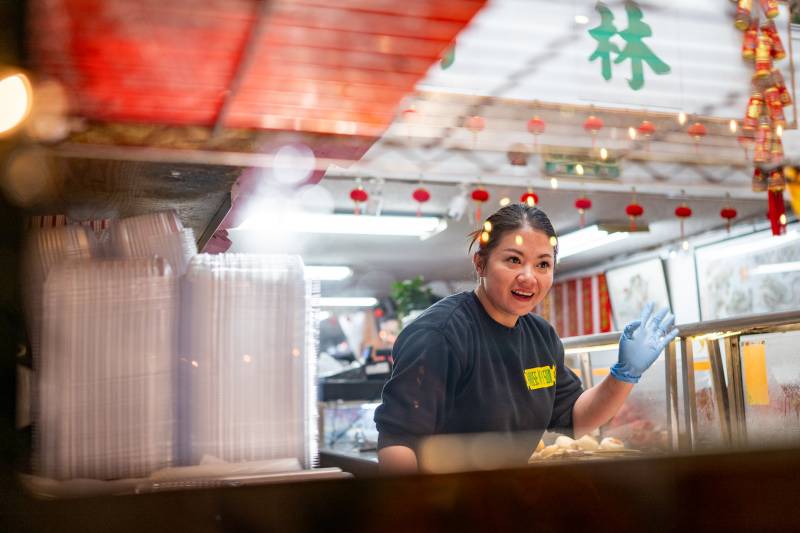I
n his booming announcer voice and wearing a classy black suit and pair of sunglasses, Steven Lee recounted his first memories of dining at Sam Wo Restaurant in San Francisco’s Chinatown.
As a 20-year-old San Francisco State University student, he stepped into the establishment with friends after a late night out. With its doors open until 3 a.m., the restaurant satiated the cravings of hungry customers by serving inexpensive, classic Cantonese dishes like chicken jook, wonton soup, chow fun, sweet and sour pork and rice noodles.
Grandparents brought their children to learn how to use chopsticks. Mahjong players, with their minds fixed on a plate of $4 chow mein, filtered in after the parlors closed for the night.
Little did Lee know that decades later, he would be vital in raising money for Sam Wo’s resurrection in a humble location steps away from Portsmouth Square. After more than 100 years of service, a change in ownership and location, the reputation of having the “world’s rudest waiter” and maintaining a place in the ever-changing landscape of the country’s oldest Chinatown, Sam Wo endures.

With President Joe Biden and world leaders from the Pacific Rim, including President Xi Jinping of China, in San Francisco for the Asia-Pacific Economic Cooperation (APEC) summit, it has put neighborhoods like Chinatown in the spotlight.



